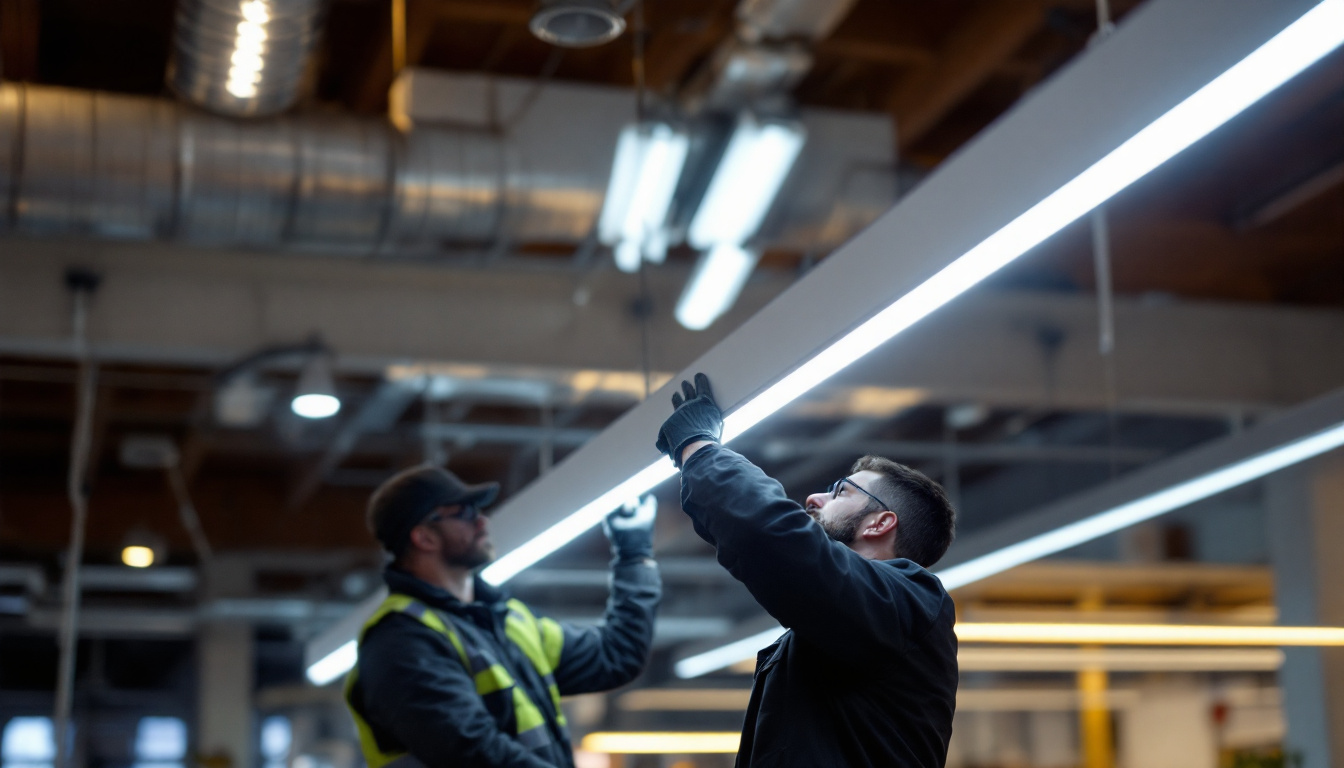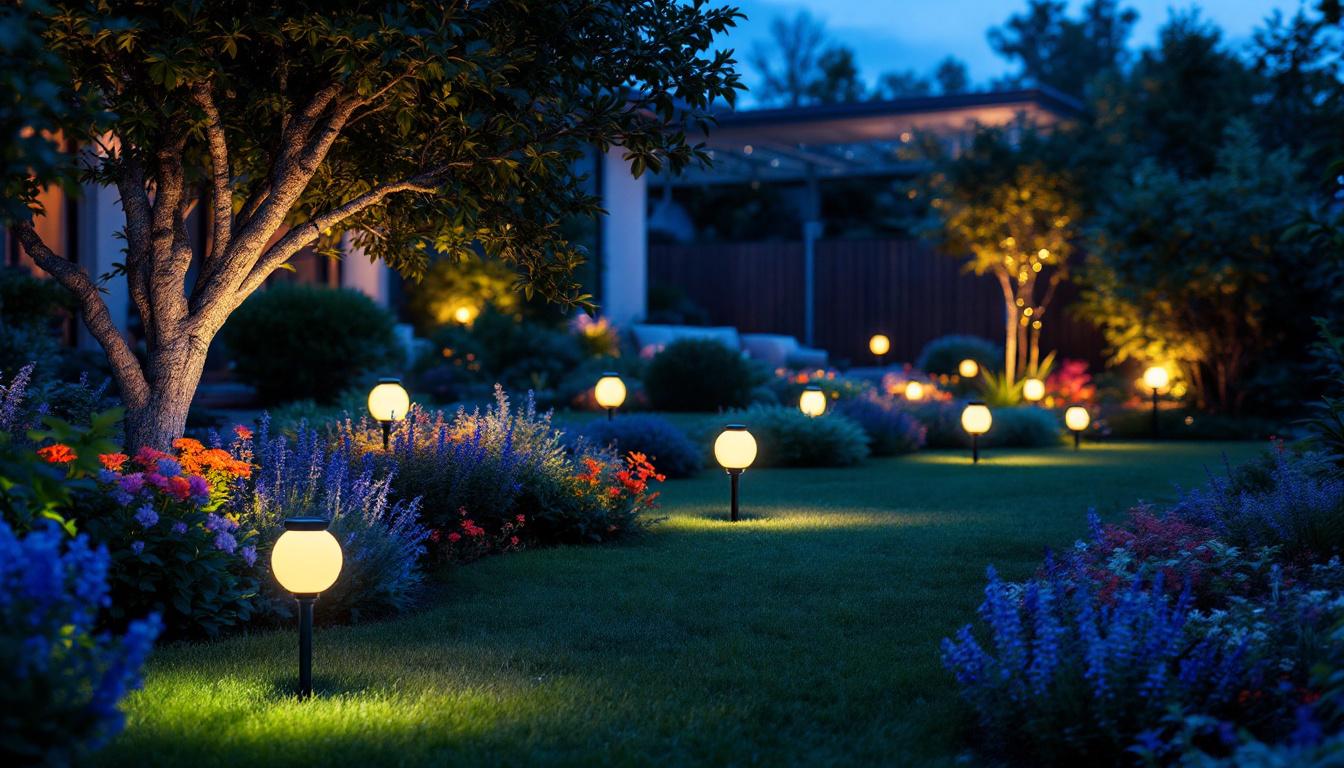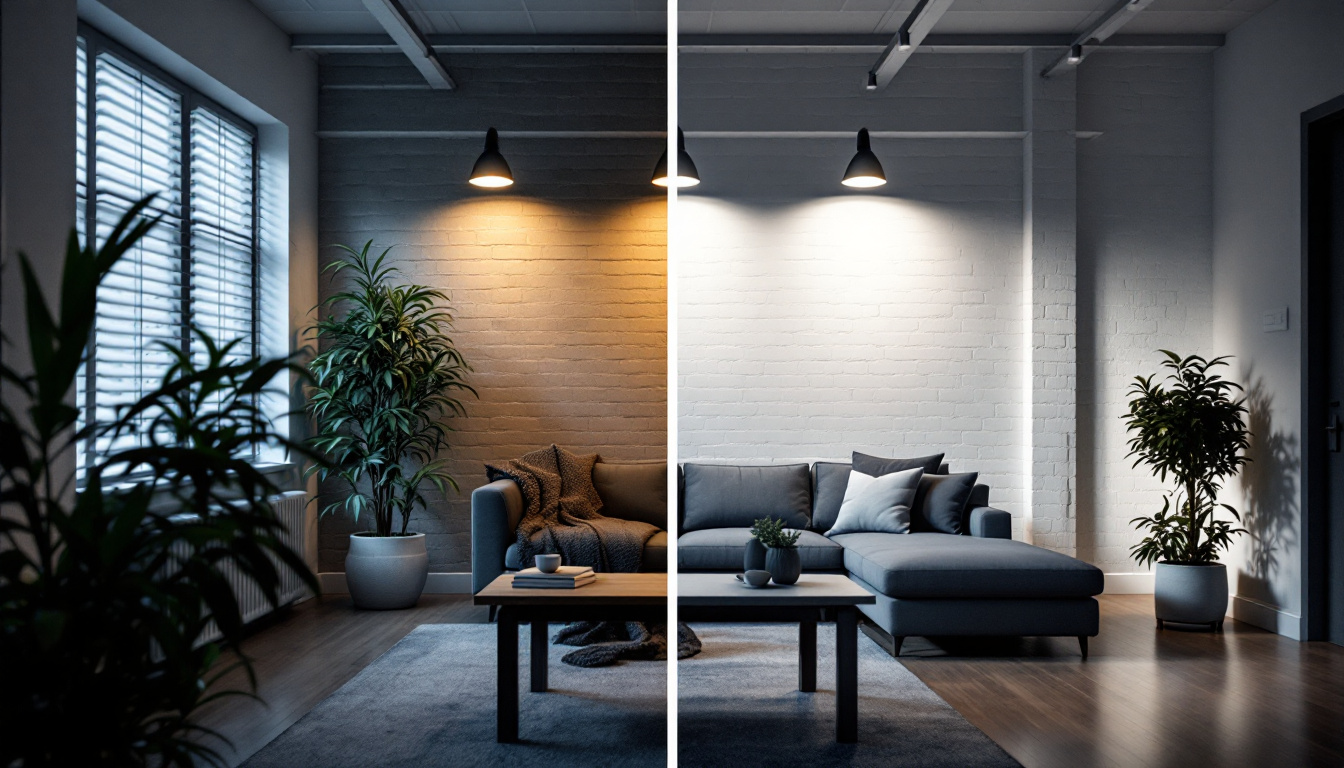
Eight foot LED tubes have become a staple in commercial and industrial lighting applications, offering a compelling alternative to traditional fluorescent tubes. For lighting contractors, understanding the nuances of these long LED tubes is essential to delivering efficient, cost-effective, and sustainable lighting solutions to clients.
The shift toward LED technology is driven by the need for energy efficiency, longer lifespan, and reduced maintenance costs. Eight foot LED tubes are particularly popular in warehouses, manufacturing facilities, retail spaces, and large offices, where high-output, uniform lighting is critical. This article explores the smart approaches lighting contractors use when incorporating eight foot LED tubes into their projects, highlighting installation techniques, product selection, and energy management strategies.
One of the key advantages of eight foot LED tubes is their ability to provide consistent illumination over large areas, which is crucial in environments where visibility is paramount. For instance, in a warehouse setting, the expansive layout often requires lighting solutions that minimize shadows and enhance safety for workers navigating through aisles filled with inventory. Additionally, the high lumen output of these LED tubes can significantly improve the overall ambiance of a space, making it more inviting for both employees and customers alike.
Moreover, the versatility of eight foot LED tubes extends beyond mere illumination; they can also be integrated with smart lighting systems that allow for advanced control options. These systems enable features such as dimming, motion sensing, and even color tuning, providing businesses with the ability to tailor their lighting to specific tasks or times of day. This adaptability not only enhances operational efficiency but also contributes to energy savings, as lights can be programmed to turn off or adjust based on occupancy or natural light levels. As the demand for smart building technologies continues to rise, lighting contractors must stay abreast of these innovations to offer comprehensive solutions that meet the evolving needs of their clients.
One of the primary reasons contractors recommend eight foot LED tubes is their superior energy efficiency compared to traditional fluorescent tubes. LED tubes can reduce energy consumption by up to 50% or more, depending on the application. This translates directly into lower electricity bills for clients, making LED upgrades a financially sound investment.
Moreover, LEDs have a longer operational life—often exceeding 50,000 hours—significantly reducing the frequency and cost of replacements. For large facilities with hundreds of fixtures, the cumulative savings on maintenance and energy can be substantial. Additionally, many utility companies offer rebates and incentives for upgrading to energy-efficient lighting solutions, which can further enhance the financial benefits for contractors and their clients. This not only makes the initial investment more palatable but also encourages a shift towards sustainable practices in commercial and industrial settings.
Eight foot LED tubes deliver consistent, flicker-free lighting with improved color rendering. This enhances visibility and workplace safety, particularly in industrial environments where accurate color perception and uniform illumination are critical. Many LED tubes offer color temperatures ranging from warm white to daylight, allowing contractors to tailor lighting to the specific needs of the space. The ability to choose between different color temperatures also means that contractors can create environments that promote productivity and well-being, as studies have shown that the right lighting can positively impact mood and efficiency in workspaces.
Furthermore, the instant-on feature of LED tubes eliminates the warm-up time associated with fluorescent lights, providing immediate illumination when needed. This is especially beneficial in areas that require quick response times, such as warehouses or manufacturing plants, where delays can lead to decreased productivity. The durability of LED tubes also means they are less susceptible to breakage, making them ideal for high-traffic areas where traditional lighting might fail more frequently.
Modern LED tubes are designed for easy retrofit into existing fluorescent fixtures, minimizing labor and material costs. Contractors appreciate that many LED tubes are compatible with existing ballasts or can be installed ballast-bypass style, depending on client preferences and fixture conditions. This flexibility allows for phased upgrades and reduces downtime during installation. The straightforward installation process not only saves time but also allows contractors to efficiently manage multiple projects without the need for extensive retraining or specialized tools.
Additionally, the lightweight design of LED tubes makes handling and installation easier, reducing the risk of injury for workers. Contractors can also take advantage of the variety of options available in the market, including dimmable LED tubes and those with smart technology capabilities, which can be integrated into existing building management systems. This adaptability ensures that contractors can meet diverse client needs while staying ahead of trends in energy management and smart building technologies.
Before installation, a thorough assessment of existing fixtures is essential. Contractors should determine whether the current ballasts are compatible with LED tubes or if a ballast bypass is necessary. Ballast compatibility can affect both initial costs and long-term reliability.
In many cases, removing the ballast and rewiring the fixture for direct line voltage (ballast bypass) is the most cost-effective and reliable approach. This eliminates ballast failures and maximizes energy savings, but requires careful adherence to electrical codes and safety standards.
Safety is paramount when retrofitting lighting systems. Contractors must ensure that wiring modifications comply with the National Electrical Code (NEC) and local regulations. Proper labeling and documentation of ballast bypass installations help future maintenance teams understand the system configuration.
Additionally, contractors should verify that LED tubes are installed with the correct polarity and orientation, as some models require specific wiring to function properly. Using LED tubes with universal wiring options can simplify installation and reduce errors.
Eight foot LED tubes provide linear, wide-spread light, but fixture placement and spacing remain critical for achieving uniform illumination. Contractors often use lighting design software to model spaces and determine optimal fixture layouts. This ensures that light levels meet industry standards for the intended use, whether it’s a warehouse, retail floor, or office environment.
In some cases, upgrading to LED tubes allows for fewer fixtures or reduced wattage per fixture, further enhancing energy savings without compromising light quality.
Choosing the right LED tube involves evaluating several technical specifications. Lumens per watt (lm/W) indicates the efficiency of the tube, with higher values signifying better energy performance. Color temperature (measured in Kelvin) affects ambiance and task visibility, while the Color Rendering Index (CRI) reflects how accurately colors appear under the light.
Contractors should also consider the tube’s beam angle, input voltage range, and certifications such as UL or DLC listing, which ensure safety and quality standards are met.
For industrial settings, high lumen output and robust construction are priorities. Tubes with a color temperature of 4000K to 5000K are common, providing bright, neutral white light that enhances visibility and reduces eye strain.
In retail environments, warmer color temperatures (3000K to 4000K) and high CRI values help products appear more attractive. Offices benefit from balanced lighting that reduces glare and supports productivity, often achieved with tubes offering 3500K to 4100K color temperatures.
LED tubes used in damp or dusty environments should have appropriate ingress protection (IP) ratings. Contractors working in refrigerated or outdoor spaces must select tubes rated for low temperatures and moisture resistance to ensure longevity and performance.
Smart lighting contractors increasingly integrate occupancy sensors and daylight harvesting controls with eight foot LED tubes. These technologies automatically adjust lighting based on presence and ambient light levels, further reducing energy consumption.
For example, in warehouses or storage areas where lighting is only needed when personnel are present, occupancy sensors can reduce wasted energy. Daylight sensors adjust artificial lighting in response to natural light, maintaining consistent illumination while maximizing efficiency.
Networked lighting control systems enable centralized management of lighting across large facilities. Contractors can program schedules, dimming levels, and scene settings remotely, improving operational flexibility and maintenance oversight.
Such systems also provide valuable data on energy usage and lamp health, allowing proactive maintenance and optimization. This level of control is particularly beneficial in multi-tenant buildings or campuses where lighting needs vary by zone or time of day.
As the Internet of Things (IoT) expands, lighting contractors are specifying LED tubes and fixtures compatible with IoT platforms. This enables integration with building management systems (BMS) and other smart infrastructure, facilitating holistic energy management and occupant comfort strategies.
Choosing LED tubes with modular components and open communication protocols ensures that lighting systems remain adaptable to future technological advancements.
While eight foot LED tubes offer significant long-term savings, the upfront cost can be a concern for some clients. Lighting contractors can address this by providing detailed return-on-investment (ROI) analyses that factor in energy savings, reduced maintenance, and potential utility rebates.
Many utility companies offer incentives for LED upgrades, which contractors should help clients navigate to reduce initial expenses. Additionally, phased retrofit approaches can spread costs over time without disrupting operations.
Clients often worry about the reliability of LED products. Contractors should specify tubes from reputable manufacturers with robust warranties—typically 5 years or more. This provides assurance against premature failures and supports client confidence in the investment.
Documenting installation practices and maintaining open communication with manufacturers can streamline warranty claims if issues arise.
Proper maintenance and operation are key to maximizing the benefits of LED lighting. Contractors should educate clients on cleaning procedures, fixture inspections, and how to use smart controls effectively.
Providing clear documentation and training helps clients realize the full potential of their new lighting systems and fosters long-term satisfaction.
Eight foot LED tubes represent a transformative opportunity for lighting contractors to deliver superior lighting solutions that combine energy efficiency, durability, and adaptability. By carefully assessing existing infrastructure, selecting appropriate products, and integrating smart controls, contractors can optimize lighting performance and client value.
Addressing common challenges with transparent communication and thorough planning ensures smooth project execution and long-term success. As the lighting industry continues to evolve, embracing these smart approaches will position contractors as trusted partners in sustainable building design and operation.
Ready to elevate your lighting projects with the efficiency and adaptability of eight foot LED tubes? Look no further than LumenWholesale for your lighting needs. Our commitment to quality and affordability ensures that you have access to the best spec-grade lighting products at wholesale prices that simply can’t be beaten. Say goodbye to middleman markups and hello to a vast selection of reliable, high-performance lighting that meets the highest industry standards. Plus, with free shipping on bulk orders, you’ll enjoy the ultimate convenience without any hidden fees. Don’t compromise on quality or value—choose LumenWholesale for Wholesale Lighting at the Best Value and make your next project a shining success.

Discover the transformative power of light scaling in lighting design.

Discover expert insights into fluorescent ho light fixtures with our comprehensive guide tailored for lighting contractors.

Discover the pitfalls lighting contractors often encounter with solar powered globe garden lights.

Discover the transformative benefits of LED can light conversion kits in modern lighting installations.